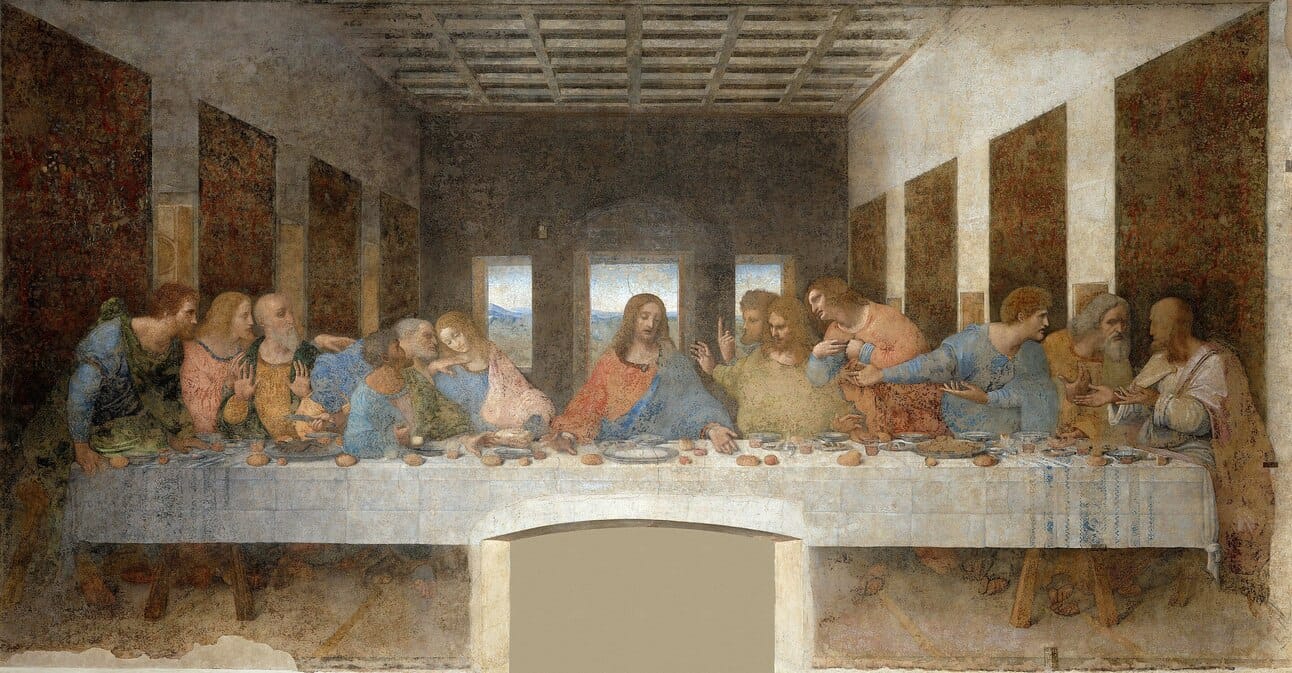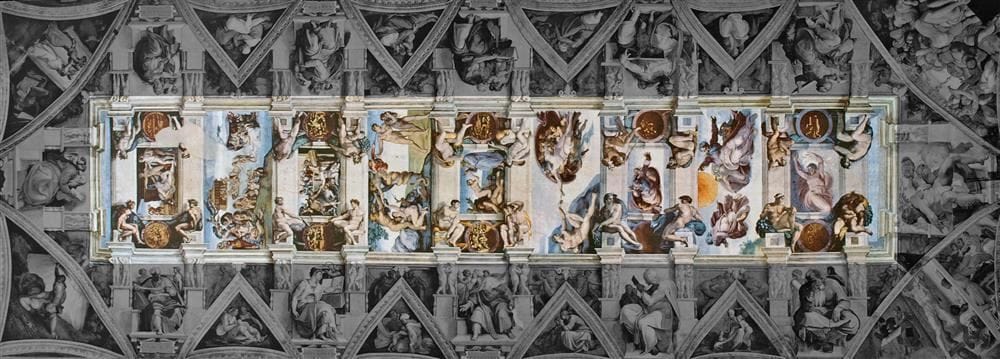It's Saturday, August 10, 2024.
Today’s edition covers the dwarfing number of evangelicals in the U.S., a new book about America’s “inorganic psychosis,” secrets of the Sistine Chapel’s ceiling, Scripture’s “scarlet worm,” and much more.
“By wisdom a house is built, and by understanding it is established; by knowledge the rooms are filled with all precious and pleasant riches.” (Proverbs 24:3-4)
Of Christian Concern
EVANGELICALS ARE FEWER THAN YOU MAY THINK

Evangelicals in the U.S. are now 1 in 10, according to sociologist George Barna.
Evangelicals “are far fewer in number than typically reported, often are far less biblical in their thinking than one might think, and tend to vote in far fewer numbers than expected,” according to a new report by the famed Christian sociologist George Barna.
Whereas “Media reports commonly cite that anywhere from 25% to as many as 40% of American adults are evangelicals,” the American Worldview Inventory 2024, released by the Cultural Research Center of Arizona Christian University, “indicates that only 10% of adults qualify as evangelicals, using survey data consistent with the NAE description of evangelicals.”
The NAE (National Association of Evangelicals) “defines evangelicals as people who recognize their sinful life, rely upon Jesus Christ for their redemption, and receive practical life guidance and wisdom from the Bible in their quest to live under the lordship of Jesus.”
By contrast, “Most statistics regarding the incidence of evangelicals are based on self-reporting,” resulting in an inflated number. Apparently, even with the smaller sample, “most evangelical[s] do not possess a biblical worldview—only about one-third do.” Perhaps most concerning of all, “the data strongly suggests that evangelicals are more likely to be shaped by the culture around them than they are to influence or ‘evangelize’ it.”
That one-third of evangelicals with a biblical worldview may do well to remember the words of the apostle Paul:
Finally, be strong in the Lord and in the strength of his might. Put on the whole armor of God, that you may be able to stand against the schemes of the devil. For we do not wrestle against flesh and blood, but against the rulers, against the authorities, against the cosmic powers over this present darkness, against the spiritual forces of evil in the heavenly places. Therefore take up the whole armor of God, that you may be able to withstand in the evil day, and having done all, to stand firm. (Ephesians 6:10-13)
Also Noteworthy

The cover of Jack Richardson IV’s new book.
→ Christian author Jack Richardson IV launched his book America’s Systemic Psychosis: How Our Nation Lost Its Mind and How to Get It Back. In it, Richardson describes America’s disconnect from truth and reality, how that disconnect came to be (it’s not “organic,” he says, but “inorganic”), and steps to reverse it.
→ 120 Christians in India were forced to convert or reconvert to Hinduism last Sunday in a ritual called "ghar wapsi,” which involves shaving one’s head and, in some cases, drinking a mixture of chicken blood and cow manure. The Christians were coerced to convert through the cutting off of their subsidized food supply.
→ Christian author Nancy Pearcey shared a statistic yesterday from a 2020 study: “62 percent of white liberals have been told by a doctor they have a mental health condition.” The study also found that, among 18 to 29-year-olds, 45.9 percent of white liberals self-report a mental health diagnosis, compared to 20.9 percent of white conservatives.
→ Apologist Neil Shenvi added his voice to the criticisms of Megan Basham’s book Shepherds For Sale this week, suggesting that some of her citations fail to support her claims. Basham responded that his criticism was “slippery” because he did not use her citations. In a subsequent series of criticisms, Shenvi argued that Basham’s representation of certain people directly contradicted things those people themselves have said. In response, Basham defended her approach of not taking all of a person’s words at face value. As some have observed and Shenvi admitted, Shenvi is not a neutral observer; his pastor, J.D. Greear, features prominently as a target of Basham’s exposé.
→ U.S. abortions exceeded 100,000 in a single month in January 2024 (reaching 102,350) for the first time since the start of #WeCount, a “national abortion reporting effort” following the overturn of Roe v. Wade. This number only includes “clinician-provided abortions,” excluding “any self-managed abortions.” Self-managed abortions are legal in all 50 states and are estimated by the Foundation to Abolish Abortion to be significant, even as high as 93,996 in a 12-month period.
Content Catch-Up
Recent, notable content of Christian interest.*

The Olympics clearly mimicked and mocked the Last Supper, Jonathan Pageau argues.
→ Democrats’ “Joy”: In a post on X, pastor and podcaster Darrell B. Harrison deconstructs a recent leftist/Democratic talking point redefining the word “joy.” (Post)
→ Imputed Obedience?: In a post viewed 65,000 times, Pastor Jesse Randolph controversially argues in a recent sermon that the doctrine of “imputation of the active obedience of Christ” is foreign to the Scripture and has been smuggled into Reformed circles. (Post)
→ Olympics Symbolism Explained: Eastern Orthodox icon carver Jonathan Pageau explains the symbolism of the 2024 Olympics’ opening ceremony. (Video)
*Not necessarily an endorsement
Church History Tidbit
Secrets of the Sistine Chapel’s Ceiling

Image of the Sistine Chapel’s ceiling with the nine center scenes highlighted, shared by Culture Critic on X.
Michelangelo painted the ceiling of the Sistine Chapel in fresco between 1508 and 1512. More of a sculptor than a painter, he had to be pressured into the project by an insistent Pope Julius II, and he disliked the work so much that he even wrote a poem about his misery.
Nonetheless, the result has maintained the fascination of many for centuries. As to be expected for such a complex work, there are any number of curiosities hiding in the paint. Culture Critic, who calls it “history's greatest artwork,” describes some of its features in a recent social media thread:
Across the center of the ceiling are nine scenes from Genesis, the middle one being the Creation of Adam, in which God stretches His finger toward the finger of the first man. “But,” writes Culture Critic, “there’s so much more than meets the eye.” For example, God appears to be reaching out to Adam from the shape of “an anatomically correct brain” formed by the train of his robe and his accompanying angels. Likewise, in the westernmost of those nine scenes, The Separation of Light from Darkness, a brain stem is “concealed in God’s neck.” Culture Critic suggests Michelangelo was at once celebrating the wonder of the human body and the human soul.
The scenes are framed by nude figures called Ignudi, the identities of which are uncertain but which some have speculated represent angelic figures.
“Around the outside are Old Testament prophets who predicted Christ's coming, like Isaiah and Zechariah.” They seem to be painted into the architecture, but this is an illusion; the architectural elements into which they are embedded are also painted.
There are also non-biblical figures: the Sibyls, who are also said to have foretold Christ’s coming from other traditions.
There are no scenes from the New Testament. Here’s a clue why: In the Garden of Eden scene, the fruit Eve reaches for is not an apple, as commonly depicted in medieval tradition, but a fig, as common to Jewish tradition.
Culture Critic suggests this meaning:
Other cultures weren't at odds with Christianity, but awaiting it — and it was time to unite them all…
Jesus isn't present on the ceiling, but everything leads up to him.
From the millennia of prophecies that predicted him, to his Jewish ancestral family painted around the outside, to the need for salvation in the first place.
The Bible, Briefly
Scripture’s “Scarlet Worm”

The 3,800-year-old textile fragment discovered in Israel. (Dafna Gazit, Israel Antiquities Authority)
“Come now, let us reason together, says the Lord: though your sins are like scarlet, they shall be as white as snow; though they are red like crimson, they shall become like wool.” (Isaiah 1:18)
The Hebrew word translated here as “crimson” (tola) is translated elsewhere as “worm”: For example, “But I am a worm and not a man…” (Psalm 22:6). The word often appears with another word meaning “crimson” or “scarlet” (shani). Together, they can be translated as “scarlet worm” (tola’at hashani, a phrase mentioned 25 times in the Bible).
Christian Today reports, “‘Worm' was used as a general term for various insects and their developmental stages in ancient times…” The insects in question are oak scale insects or kermes. These insects were used in ancient times to create a dye to color certain textiles, including “luxurious clothing” and Israel’s tabernacle fabrics (e.g., Exodus 26:1).
Last month, Israeli researchers confirmed that a 3,800-year-old textile fragment discovered in a cave near Masada in 2016 was dyed by the ancient method, making it “the earliest evidence of the technique ever discovered,” The Times of Israel reports. The method that researchers used to identify the dye allowed them to pinpoint even the species of insect, Kermes vermilio.
“The crimson bug,” the report notes, is “found throughout the Mediterranean region but not in Israel itself…” This fact, says Na’ama Sukenik of the Israel Antiquities Authority, suggests there were “broad international commercial networks already functioning at this time, and indicates the presence of an elite society.”
For purposes of Bible reading, knowing that the “crimson” in Isaiah 1:18 is a red dye used for textiles contributes to a more well-rounded understanding of why it would be contrasted with wool.